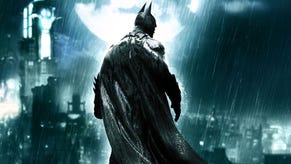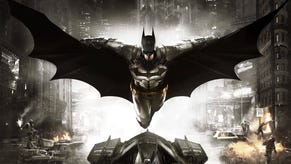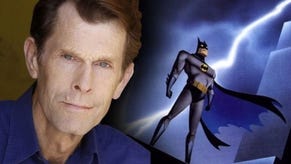Batman: Arkham City
Knight vision.
From a game perspective, Catwoman can't just add to the story: there needs to be an experiential point to her inclusion. Her attacks, as Ginn notes, are noticeably faster than Batman's and she's clearly nimbler and lighter on her feet. And this dictates the way she makes her way around the world, scampering rather than sailing over buildings with fittingly feline grace.
One of the few persistent criticisms levelled at Arkham Asylum was the implementation of Detective Mode - so super-effective it worked out as an always-available (and therefore mostly always-on) exploit.
Ginn insists the team is aware, and is making amends. "[We heard] loud and clear the comments we've had from fans and players over the last two years," he says, "We know absolutely that it was just a question of rebalancing the amount of information that you get."
"But we didn't want to strip it out completely," Ginn stresses. "Being the world's greatest detective, Detective Mode is a key part of who Batman is. But I think what gamers will find in Arkham City is they'll come across an area where they need to use it in order to decode a crime scene, but then beyond that it doesn't have the sort of power, and therefore the compulsion to keep it on isn't there, because it strips away other information: your navigational info primarily."
"Players will turn it on for when they need it, switch it off and carry on," he concludes.
A couple of weeks after my popcorn playtest I meet Paul Crocker, Rocksteady's lead narrative designer, at Gamescom in Germany. 3D support has just been announced and there are two-and-a-half-hour lines to play the game on the showfloor. The end is now tantalisingly within sight.
"We're in the last week or so of development," Crocker reveals. "Obviously the pressure increases the closer we get to the end. We've been working incredibly hard for two years to make this game. For us, we feel genuinely lucky to work on Batman - we don't want to let people down."
The jury's still out on the future of stereoscopic 3D, but as prices fall more gamers are buying into it and Batman will support it on all platforms (plus, it should be noted, bi-colour 3D on console if you have cardboard specs).
"What the 3D really does is really puts you in the centre of Gotham City," says Crocker. "The great thing about our new mechanics is you've got the momentum gliding through the city. In 3D the buildings are moving past you and you get that real sense of, you're moving physically through the buildings.
"It's not the be all and end all, but once you start experiencing it it's obviously quite cool," he adds. "It's one of those things where it actually feels right for it to be doing that rather than bolted on."
The North London-based team of 65 that punched so spectacularly above its weight with Arkham Asylum has now expanded out of necessity into three figures. But there's no sense that success has gone to their heads. The focus remains the same - and, of course, the pressure to produce the goods has increased by an order of magnitude.
"What would Batman do? How would Batman open a door? How does Batman go through a window? All these stupid questions we ask ourselves all the time," says Crocker. "And one of the things that's always been on our wishlist was: Batman in Gotham.
"Our art director talks quite a lot about how he used to play the first game and just look out at the city and say, 'I wonder what it would be like if I could go over there?' And six months later we had it up and running. It's crazy, but we're all really excited."
Us too.












